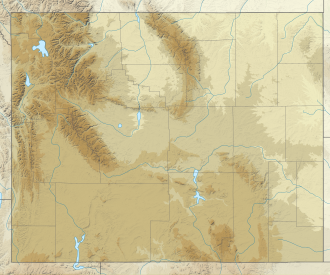History
Prospectors named Hoodoo Basin, below the southern slopes of the peak, which refers to geologic formations called hoodoos found there. When Philetus Norris, the second superintendent of Yellowstone Park, climbed the peak in 1880, he took note of the hoodoos. In his report he used an aneroid barometer to measure the summit elevation to be 10,700 feet and wrote: "Here, extending from 500 to 1,500 below the summit, the frosts and storms of untold ages in an Alpine climate have worn about a dozen labyrinths of countless deep, narrow, tortuous channels amid the long, slender, tottering pillars, shafts, and spires of the conglomerate breccia and other remaining volcanic rocks. Here the sharp-cornered fragments of rocks of nearly every size, form, formation, and shade of coloring, by a peculiar volcanic cement attached sidewise, endwise, and upon the tops, sides, and, apparently, unsupported, upon each other, represent every form, garb, and posture of gigantic human beings, as well as of birds, beasts, and reptiles. In fact, nearly every form, animate or inanimate, real or chimerical, ever actually seen or conjured by the imagination, may here be observed." [5] [6] The mountain has also been known as Goblin Peak, but the mountain's hoodoo name was officially adopted in 1895 by the United States Board on Geographic Names. [1]
This page is based on this
Wikipedia article Text is available under the
CC BY-SA 4.0 license; additional terms may apply.
Images, videos and audio are available under their respective licenses.









